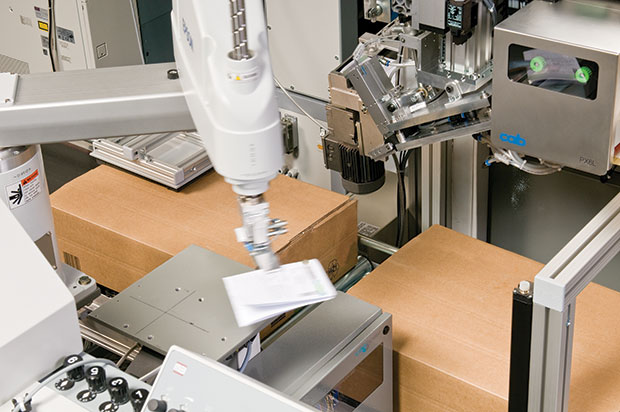Handling higher volumes of soft packages, replenishing in-store stock, despatching directly to end users. Your despatch process has become a critical element in recent years, which puts pressure on your facility — and on your people.
 Optimizing the way you handle shipping documents and vehicle loading — or just one of these steps — will make the process more robust.
Optimizing the way you handle shipping documents and vehicle loading — or just one of these steps — will make the process more robust.
Handling shipping documents automatically
If you handle shipping documents manually, there is an enormous saving in automating this step. Delivery notes, return paperwork and even pre-printed flyers can be matched to the shipment and placed inside, on top or underneath the items to be shipped automatically. Merging paperwork from below is often the best solution for soft packages. The item being despatched keeps the paperwork in place as it moves along the conveyor.
Up to 5 pages can be printed, folded and placed on top of a parcel, then neatly sealed-in to form a despatch pouch automatically. Ideal when despatching to B2B customers, increasing efficiency by 600% compared to manual handling.
In the automated process, shipping documents are printed exactly when required, which means last minute changes to an order are reflected accurately.
Load parcels and packages automatically
Everyone is struggling to handle higher volumes. You may be despatching slippery bags or handling more padded envelopes than parcels. The challenges of loading are intensified by a lack of manpower. Switching to an automatic solution means you get a higher capacity — without investing in your premises and with fewer people.
Not only is the loading process quicker, it’s more flexible and efficient. Automatic loading is non-stop, throughout the night if necessary. No risk of injury, no training and no breaks. One person can supervise numerous doors. Meeting tight time slots has never been easier.





Comments are closed.